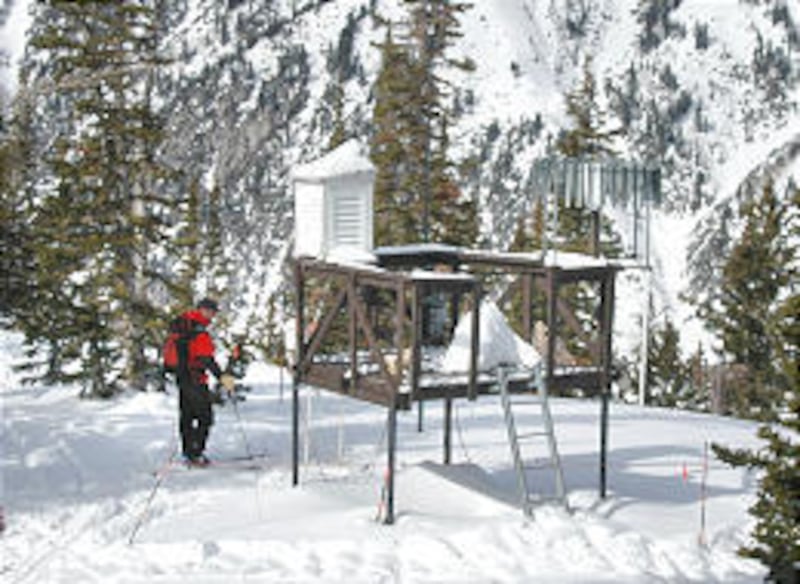SNOWBIRD — Early each morning, thousands of people are waiting to hear what Dean Cardinale has to say.
His message earlier this week was: "18 inches of new snow over a 123-inch base and still snowing."
Based on his report, people will: (a) take a day off; (b) plan a vacation; (c) skip school; (d) suddenly feel too sick to go to work; (e) wish Saturday would hurry up and arrive.
Also, based on his report, which goes into much more detail, Snowbird will write its entire snow safety program for the day.
It's a fact that all the public wants to hear about is "inches of new snow."
The resort staff, on the other hand, needs to know things like snow density, wind direction and velocity, and slope history, which in the case of a ski area deals with accumulation, storm dates and past events.
Cardinale arrives at the office well before the sun rises. His first duties are to assess snow conditions, mainly new snow totals and density or water content. This is information vital to snow safety.
Each morning, before sunrise, he climbs down a metal ladder to a protected measuring plot near the main tram building. There he first goes to a piece of wood 2-foot square sitting flat against the snow surface. There he measures new snow that may have fallen over the previous 24 hours. He then checks the density or water content of the new snow and total accumulation.
His main monitoring center is located mid-mountain, a little southeast of the Mid-Gad lodge, where there is another square board, temperature and wind monitors and gauges to measure density.
It is the mid-mountain readings Cardinale releases to the skiing public.
Resort staff look at all the recorded information in order to ensure snow safety through avalanche forecasting, "which for us means making the mountain safe for skiers," he explained as he checked readings at the midmountain station.
"It's important for us to be as accurate as possible with our snow amounts and water content. All this information tells us what we can expect to happen on the slopes people are going to ski."
Along with snow depth and water content, Cardinale needs to know wind speed and direction.
"If the snow, for example, is 15 percent (water density) and there's a 10 mile per hour wind, it's not going to move much snow. But, if the snow is 4 percent (water density) with a 10 mile per hour wind, it could move a lot of snow, redeposit it in slabs and this could be a potential avalanche problem."
Utah's good, dry snow, which is world famous for being light and easy to ski, is typically around 7 percent water. This year there were storms where the water content was 30 percent.
"There are people here who've been around for 30 years and they've never seen snow that heavy. That's the reason we had such devastating avalanches. There was one, outside the resort area, which wiped out a forest of 100-year-old trees," he said.
Once all the information has been gathered, members of the snow safety team take an aggressive approach to stabilizing conditions, which involves the use of explosives and actually skiing across ski runs, "one at a time. One patrolman skis while another watches. It's exciting, but it can be stressful at times, especially after we've received lots of snow."
Knowing the history of different slopes and slide areas is also helpful information. Snowbird has detailed records dating back to when the resort opened in the 1970s.
And, while the public is most interested in new snow and total depth, the three most pressing questions for Cardinale are density of the snow or how much water it holds, wind direction and wind speed.
"Those three things give us a good indication of the kinds of snow conditions and from that we can put together a forecast."
Then the area can set about making slopes safe and enjoyable for skiers who caught Cardinale's snow report and have come to enjoy the new snow and solid base.
E-mail: grass@desnews.com



